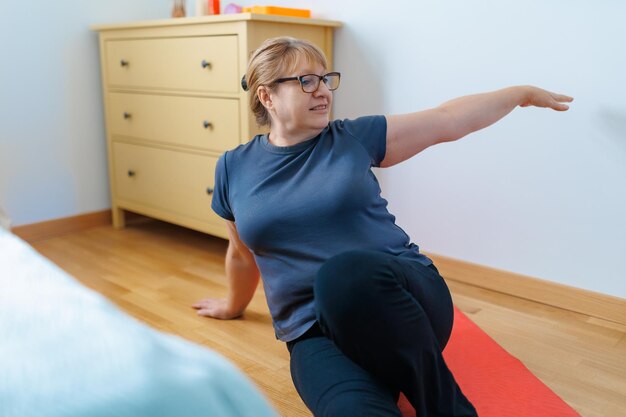Want to Continue Pilates with Osteoporosis? Here’s What You Need to Know
If you’re living with osteoporosis, you might be wondering whether it’s safe to roll out the Pilates mat. Pilates, focused on strengthening core muscles and improving flexibility, can indeed be an excellent way for people with osteoporosis to stay active—if practiced carefully.
Understanding Osteoporosis
First, a quick word on osteoporosis. This condition is characterized by a loss of bone density, often leading to fragile bones and an increased risk of fractures. Because of this, many worry about engaging in physical activity, fearing it might lead to injuries. However, exercise is vital for maintaining and potentially improving bone health.
Why Pilates is Beneficial
Pilates offers several benefits for individuals with osteoporosis:
- Improved Balance: This helps prevent falls, a common concern for those with brittle bones.
- Increased Strength: Especially in the core, back, and hips, which are essential for bone support.
- Flexibility and Posture: Better posture reduces the risk of injuries related to poor alignment.
Safety Tips for Practicing Pilates with Osteoporosis
Consult Your Doctor: Always discuss with your healthcare provider before starting or continuing any exercise program.
Find a Qualified Instructor: Look for instructors who have experience working with individuals with osteoporosis.
Modify Exercises: Avoid forward bending or twisting movements which can put pressure on the spine. Focus instead on exercises that strengthen without compromising safety.
Use Props Wisely: Tools such as resistance bands, balls, and small weights can enhance your practice without straining bones.
Listen to Your Body: If something feels painful or uncomfortable, stop immediately and consult with your instructor.
Beyond Pilates: Discovering Support Services
Living with osteoporosis doesn’t just affect your physical health; it might impact financial aspects too. Understanding available resources can provide peace of mind.
- Government Aid Programs: Explore options such as Medicare, which might cover certain therapies or equipment related to osteoporosis.
- Financial Assistance Options: Investigate nonprofit organizations offering grants or funds for those with chronic health conditions.
- Debt Relief and Credit Solutions: If medical expenses are piling up, consider credit counseling services or debt relief programs tailored for medical debt.
- Educational Grants: For those seeking career pivots due to physical limitations, available scholarships and grants can pave new pathways.
Remember, having osteoporosis doesn’t mean your movement or financial options are limited. With the right guidance and resources, you can maintain an active, balanced life both on and off the mat.
🚀 Financial and Educational Support Resources:
- Medicare: Access healthcare services with potential coverage for osteoporosis-related treatments.
- Nonprofit Assistance: Seek out foundations offering grants for medical expenses.
- Credit Counseling Services: Explore options to manage medical debt effectively.
- Scholarships and Grants: Pursue educational opportunities with financial help tailored for those making a career change due to health conditions.

Related Topics
- a Nurse Is Caring For a Client Who Has Osteoporosis.
- a Percutaneous Is Performed To Treat Osteoporosis Related Compression Fractures
- Can Alcohol Cause Osteoporosis
- Can I Reverse Osteoporosis
- Can Men Get Osteoporosis
- Can Osteoporosis Affect Teeth
- Can Osteoporosis Be Cured
- Can Osteoporosis Be Painful
- Can Osteoporosis Be Reversed
- Can Osteoporosis Cause Back Pain